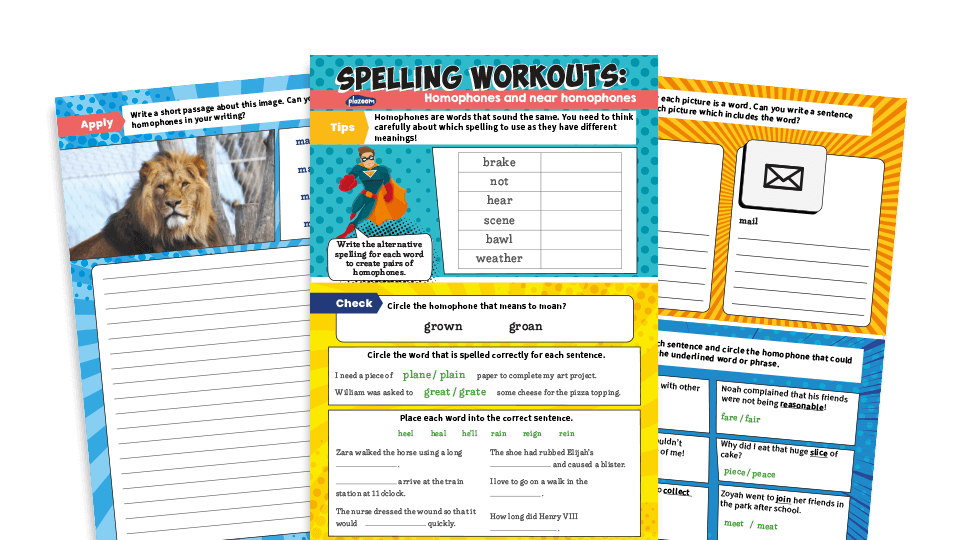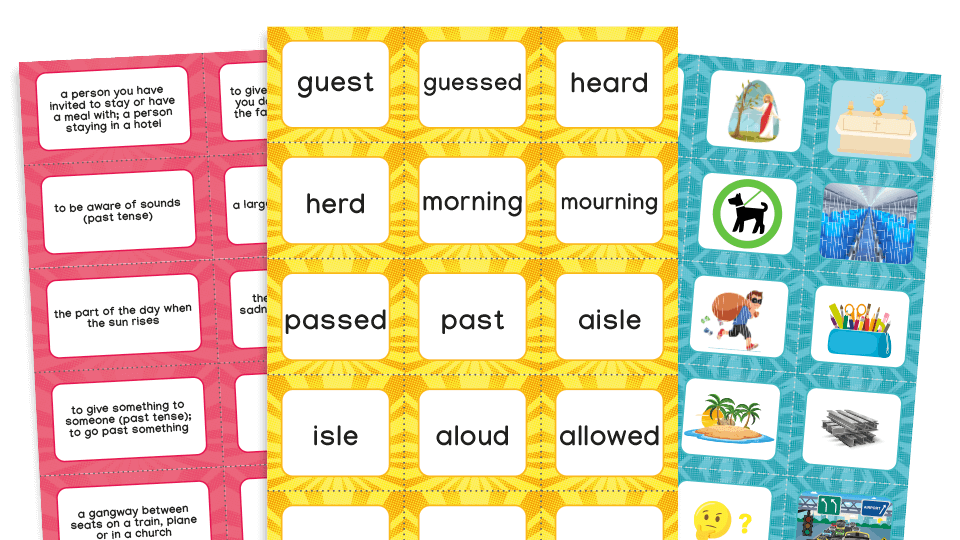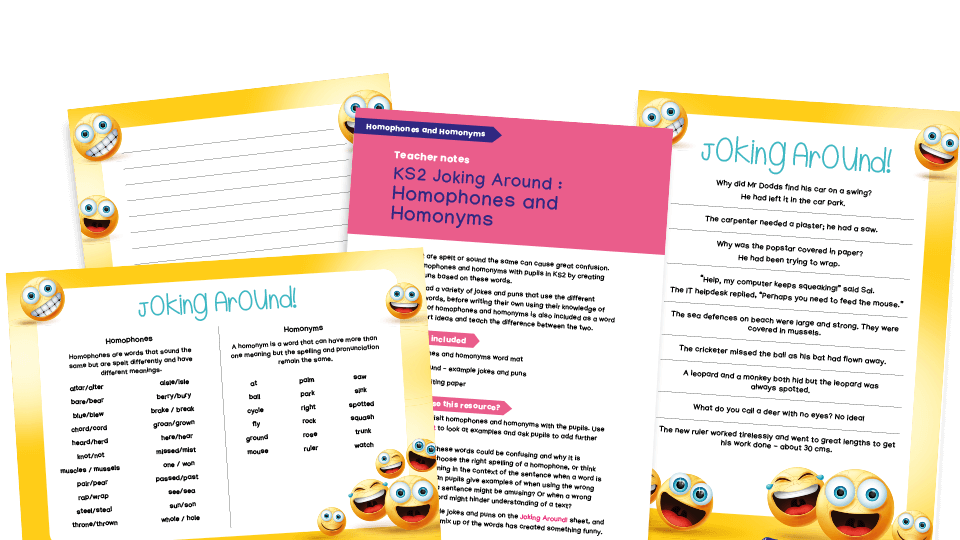When it comes to teaching spelling in KS2, some of the most commonly confused words are homophones. Here are some tips to help you confidently teach your pupils which witch is which...
What is a homophone?
As you no doubt know from the etymological roots of the word (homo = same, phone = sound), homophones are words that sound the same but are spelt differently and have a different meaning. A good example is through and threw. These have identical pronunciation but a different spelling and meaning.
This can cause all sorts of confusion for pupils (and indeed adults, as anyone who reads social media posts will appreciate).
More homophone examples
- there/their/they’re
- here/hear
- see/sea
- bare/bear
- one/won
- sun/son
- to/too/two
- be/bee
Know your age group – KS1, KS2
The National Curriculum takes an incremental approach to this topic, drip-feeding new pairs of homophones (and even larger groups such as too/two/to) from Year 2 onwards. It is important that you are fully aware of the words listed for the age group you are teaching.
That doesn’t mean that you should discourage your class from using homophones from a later stage. You should, however, make sure that you actively teach the ones that are recommended for your class.
After all, even if English Appendix 1 from the National Curriculum does say they are ‘non-statutory’, you can be sure that they are the ones that will pop up in any official test.
To help you pitch your input accurately, we offer homophone spelling workouts for Year 2, Years 3-4 and Years 5-6.

But first, it might be worth looking to see whether some of the following ideas could help you, too.
Tricks and patterns for remembering homophone spellings
Although it might sometimes seem rather random which spelling applies to which homophone, there are often useful ways to help KS2 pupils remember. Many of those which have an immediately apparent logic are suggested below.
For others, you can invent (or borrow) tips to share with your class. For example, too has an o and another o too.
This could also involve making links with related words, for example you hear with your ear or with known spelling patterns, as in there are two tens in twenty. Why not challenge your class to come up with some of their own?
Contractions that are homophones
A number of common contractions are also homophones, such as:
- it’s/its
- you’re/your
- they’re/their/there
- who’s/whose
- he’ll/heel/heal
- we’re/weir
As pupils should have already encountered contractions, urge them to de-contract them within the sentence they are using to see if they make sense.
If they don’t, they’ll know to use the other option. For example, The river burst its banks makes sense but The river burst it is banks does not, so the first version, without the apostrophe, must be right.
Suffix -ed sounds like t
By the end of Year 1, pupils should be familiar with the concept of adding the suffix -ed to create a past tense verb (even if they couldn’t explain it in those terms).
Therefore, it might help them in KS2 to consider whether a particular homophone is being used as a noun or the past tense of a verb.
For example, compare He guessed the right answer with He was a guest in our house. The same will apply to missed/mist and passed/past.
Not quite homophones
It is important to include pairs of words that are not exactly homophones but could be confused with each other.
Some involve a subtle change of sound or emphasis, such as quite and quiet. Others might be a function of the local accent, such as where/were, so it might help to emphasise or exaggerate differences in sounds to help your pupils remember.
Word classes
Sometimes, the class of a word will dictate the spelling of homophones which are almost identical in meaning, such as practice/practise.
As a rule, if it’s being used as a noun, such as in a dental practice, it ends in -ce. If it’s being used as a verb, as in practise your spellings, it ends in -se. Advice/advise is another good example.
Going back to your word roots
Get into etymology – you won’t regret it! Learning how words develop, change and link is not just interesting, it can really help with spelling, especially homophones.
For example, you could work out that thrown is linked to the word throw, so throne must be the thing kings sit on.
Similarly, the prefix pre means before (hence prefix) while the prefix pro means forward. Therefore, proceed means go on or forward while precede means to go before, as in precedent.
Other good examples at UKS2 level include compliment/complement. Complement is related to the word complete, so compliment must be the one which means saying nice things about someone or something.
Also, serial shares its root with the word series, so cereal must be the one that you have for breakfast. See if you can share other examples with your class.
Practice makes progress with homophones in KS2
There’s no substitute for good teaching, but you don’t have to create all the resources yourself. As well as using the homophones worksheets mentioned above, why not take advantage of our SPaG challenge mats? There are different versions for Lower KS2 and Upper KS2.

This homophones KS2 make-a-match game is a fun way for pupils in Year 5 and Year 6 to further develop their understanding of homophones.

Finally, explore homophones (and homonyms) in KS2 by creating jokes and puns. Pupils will read a variety of jokes that exploit the different meaning of words before writing their own.

They’re/their/there (you choose) are so many other examples to work with, you’re/your bound to/two/too be able to turn it into quite/quiet a fun game. But don’t forget, our/hour/are resources can save you precious time. We hope you’ve found this advise/advice useful!
Sue Drury qualified as a primary teacher in 1999. Teaching pupils from Year 1 to Year 8, she has held a variety of positions including maths and English subject leader, year leader, and assistant headteacher. Sue has mentored students and NQTs, offering guidance and advice using her years of experience. She created many of Plazoom's literacy resources.